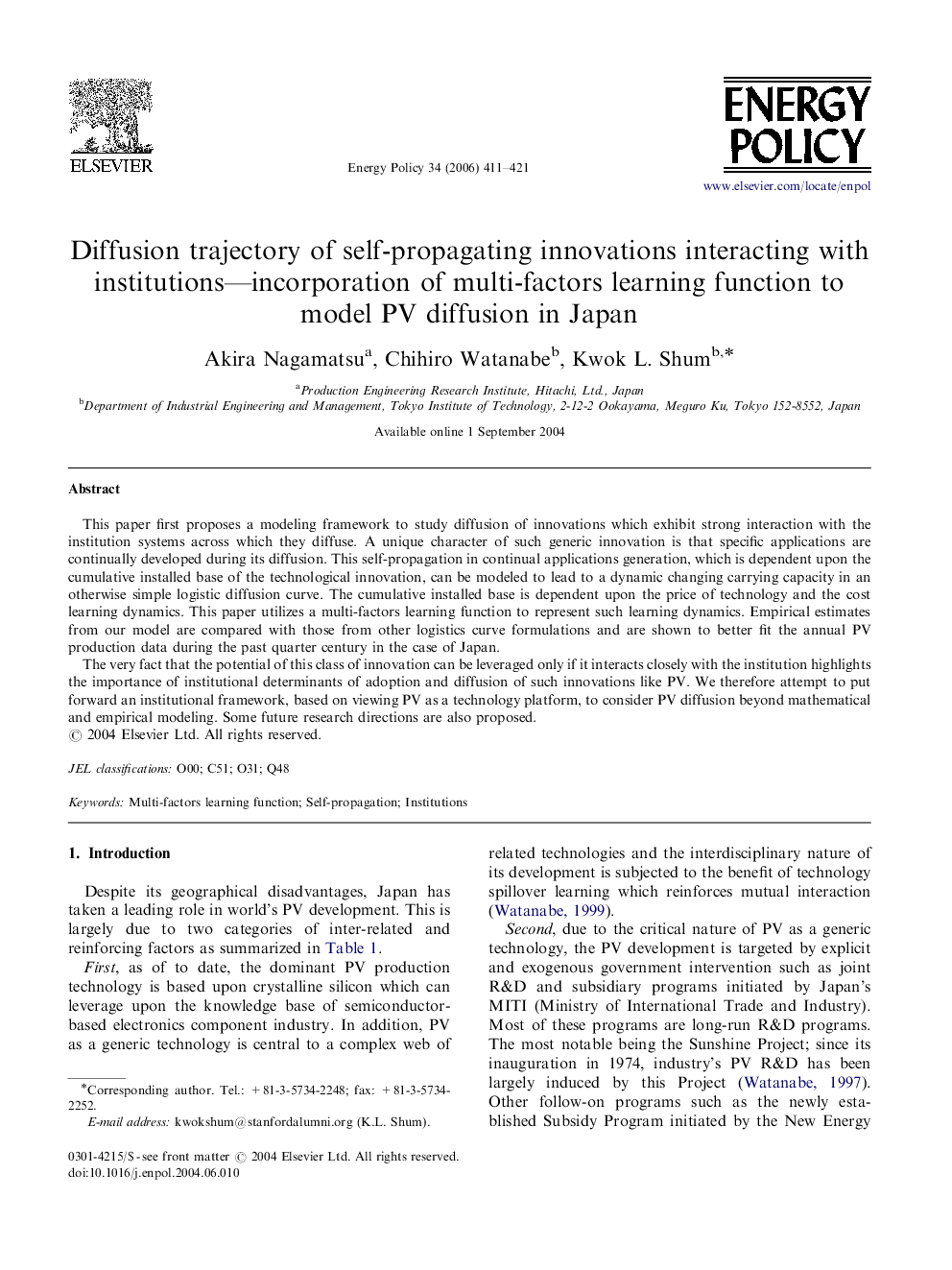| Article ID | Journal | Published Year | Pages | File Type |
|---|---|---|---|---|
| 997276 | Energy Policy | 2006 | 11 Pages |
This paper first proposes a modeling framework to study diffusion of innovations which exhibit strong interaction with the institution systems across which they diffuse. A unique character of such generic innovation is that specific applications are continually developed during its diffusion. This self-propagation in continual applications generation, which is dependent upon the cumulative installed base of the technological innovation, can be modeled to lead to a dynamic changing carrying capacity in an otherwise simple logistic diffusion curve. The cumulative installed base is dependent upon the price of technology and the cost learning dynamics. This paper utilizes a multi-factors learning function to represent such learning dynamics. Empirical estimates from our model are compared with those from other logistics curve formulations and are shown to better fit the annual PV production data during the past quarter century in the case of Japan.The very fact that the potential of this class of innovation can be leveraged only if it interacts closely with the institution highlights the importance of institutional determinants of adoption and diffusion of such innovations like PV. We therefore attempt to put forward an institutional framework, based on viewing PV as a technology platform, to consider PV diffusion beyond mathematical and empirical modeling. Some future research directions are also proposed.
